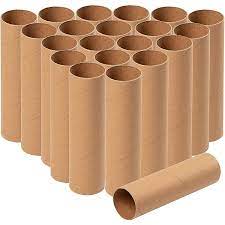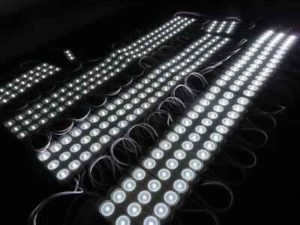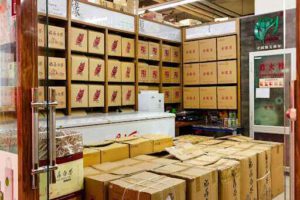Paper tube manufacturers can produce various industrial cardboard tubes and cores. Spiral and convoluted tubes are the two main types of paper tubes and consist of paper or paperboard sheet layers. The layers are wound together to form a strong, hollow, cylindrical shape. Paper tubes come in distinct shapes for different applications, including fabric rolls, yarn carriers, spools, caulking cylinders, and more. Here’s an overview of the manufacturing process:
1. Making Ribbons from Paper
The first stage in making paper tubes involves making ribbons from the source cardboard. Manufacturers can use paperboard, kraft paper, fiberboard, or composites featuring paper and adhesives. Recycled cardboard is converted into large sheets and trimmed into narrow ribbons. The ribbons are lined and piled together to form giant ribbon rolls, more like stacked poker chips. If you want a thicker tube, the manufacturer will use more ribbon rolls.
2. Sticking Ribbons Together
Once the giant ribbon rolls are lined, the manufacturer can apply adhesive coating (industrial glue) to stick them together. The glue application is made in an overlapping fashion between each layer to help the ribbons hold firmly without losing their form. Manufacturers use the cascading gluing system, featuring a glue tank that properly transfers the adhesive to paper layers. Any excess paper is scrapped and recycled.
3. Winding and Pilling
After the ribbons are glued together, they’re wrapped around a custom-shaped and sized mandrel. The mandrel winds the paper into the desired shape. For spiral paper tubes, the ribbons are wrapped diagonally. Paper tube manufacturers can adjust the mandrel’s outer wheel to achieve the desired tube diameter. Winding is responsible for the characteristic cylindrical shape. The manufacturer can apply multiple layers to the central mandrel depending on the required strength.
4. Cutting the Paper Tubes
The next step in manufacturing industrial paper tubes is cutting them into precise sizes. Mandrels produce long wounds of paper tubes. The manufacturer will cut the long tubes into smaller pieces based on pre-determined sizes. Paper tubes can also be customized with decorative graphics, colors, and other elements to meet the customer’s branding. Industrial paper tubes are measured and classified by their interior diameter.
5. Tube Finishing Operations
Manufacturers can use surface treatments, dips, coatings, and offline convolute wraps to create a unique finish. Surface treatment can involve wax, silicon, and other waterproofing coatings to improve water resistance. The inner and outer diameters of the tube can also be polished in the case of some winding applications. Customers can also request custom graphics and labeling wraps.
Heavy-duty Paper Tube Manufacturing
Since paper tubes and cores are designed for unique applications, the manufacturing process has some variations. Some paper cores are used in heavy-duty applications that require high-strength, water-resistant paperboards. Manufacturers can incorporate special adhesives and waterproof seals into the process. Resin, wood pulp, and adhesive mixtures are prepared and cured. The manufacturer can also use an oven for additional curing before the tube is cooled and dried.
Post-forming heat treatment allows the mixture, pulp, and glue to blend into each other, resulting in a more robust paper tube. The final product is highly durable and resistant to humidity and other elements. You can use such paper tubes for transportation and storage as they’re not affected by weather and moisture. The paper tube application determines the extra steps required in the manufacturing process. Some cores require slotting, die cutting, sealing, flanging, caping, end rolling, and finishing touches.
Find Reliable Paper Tube Manufacturers
Industrial paper tube manufacturers can produce different types of cardboard cores for varied applications. When looking for paper tubes, stick to reputable manufacturers with a good track record. Leading manufacturers have many years of experience and are known for quality paper tubes and cores. Choose a company capable of delivering your order within the promised timeframe. You can also look for a manufacturer that allows you to request custom elements.





Be First to Comment